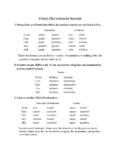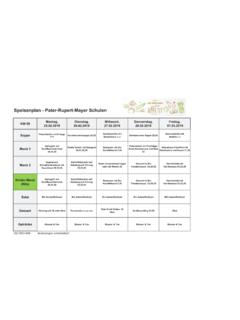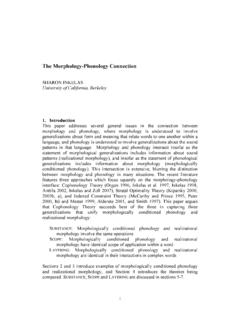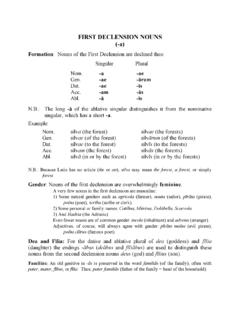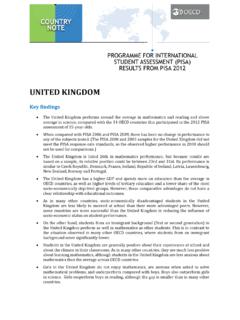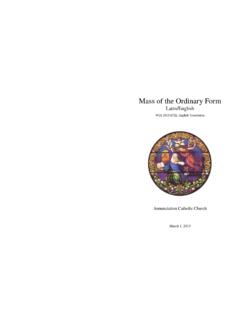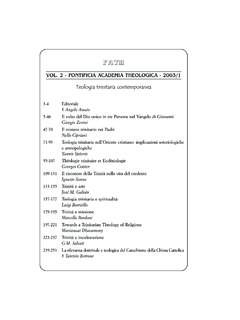Transcription of First Progress Report of the ICEL Music Committee
1 Music FOR THE ENGLISH LANGUAGE ROMAN MISSAL AN INTRODUCTION For the forthcoming English language Roman Missal (sometimes called the Sacramentary), the International Commission on English in the Liturgy will offer to the Conferences of Bishops of the English speaking world chants for everything that is set to Music in the Missale Romanum, editio typica tertia (2002): The dialogues between the celebrant (or in the case of the Dismissal, the deacon) and the assembly such as the Sign of the Cross ( In the name of the Father, and of the Son, and of the Holy Spirit ) and the Dismissal ( Go forth, the Mass is ended ); Tones for singing the presidential prayers (Collect, Prayer over the Offerings, Prayer after Communion) with all prayer texts pointed for singing; The chants before and after the readings such as A reading from the book of and The Gospel of the Lord ; Separate tones for singing the First Reading, Second Reading, and Gospel.
2 The Universal Prayer or Prayer of the Faithful; The Preface Dialogue and Prefaces, including a musical setting of every Preface; Full musical settings of Eucharistic Prayers I, II, III and IV, and the concluding Doxology; Other elements such as the Kyrie, Gloria, Creed, Sanctus, Agnus Dei, and Lord's Prayer; Chants for particular days and feasts such as Hosanna to the Son of David on Palm Sunday, the Universal Prayer and Behold the wood of the Cross on Good Friday, the Exsultet (Paschal Proclamation) at the Easter Vigil, antiphons for the Feast of the Presentation of the Lord on February 2nd, and the Proclamation of Easter and Moveable Feasts for Epiphany.
3 Some of the Latin chants will also be provided, including the Sanctus, Pater noster, Agnus Dei, and intonations for the Gloria and Credo. A chant setting of the Greek Kyrie from Mass XVI will also be provided. In some cases, following the example of the Missale Romanum, both simple and solemn settings have been provided. 1. Principles ICEL's work in preparing chant settings of the English translation has been guided by several principles: To preserve and recover the tradition of unaccompanied singing in the Roman Rite, since the liturgy is given a more noble form when .. celebrated solemnly in song (Second Vatican Ecumenical Council, Constitution on the Sacred Liturgy Sacrosanctum Concilium, 1963 [hereafter SC] 113); To facilitate full and active participation by all the people, which is the aim to be considered before all else (SC 14); To take full account of the accentuation of the English language, since the nature and laws of each language must be respected in the adaptation of traditional melodies (Sacred Congregation for Rites, Instruction on Music in the Liturgy Musicam Sacram, 1967, 54).
4 To retain vernacular chants now in use where possible, since there must be no innovations unless the good of the Church genuinely and certainly requires them (SC 23). The Commission's musical consultors have undertaken a detailed analysis of the Latin settings, creating tables of accent patterns and musical formulas. Likewise for the new English translation, tables of the accent patterns have been created, in order to arrive at the best solution where the English text has accent patterns not found in Latin. The musicians have found it helpful to look at the work of other vernacular chant adaptations such as Spanish, French, and German.
5 German language scholarship has proven helpful, both because German speaking scholars began investigating vernacular chant adaptation as early as the 1920s, and also because the German language has some similarities to English, for example, in the accent often falling on the final syllable of a phrase. The musicians also examined the previous work of English language chant adaptation in the liturgical books of 1966, 1970, 1971, and 1973. With all this in mind, their uppermost concern has been the actual celebration of the liturgy by worshiping communities and ministers. 2. Some of the Most Commonly Sung Chants Preface Dialogue For the Preface Dialogue at the beginning of the Eucharistic Prayer, the setting currently used in most of the English speaking world is retained, with appropriate adjustments for the revised text: This current setting fits the natural accentuation of the English text admirably.
6 Also, this melody is already well known to many English speaking Catholics around the world. The musicians considered and rejected a setting of the Preface Dialogue based on the Latin solemn tone (Graduale Romanum, 1974 [hereafter GR] 809 810; Graduale Simplex, 1975 [hereafter GS] 8): This new melody might be difficult for congregations; furthermore, it does not fit the English text as well as the current setting. The current and proposed setting, with its moderate ornamentation, will work very well with the proposed new Preface tone (presented further below). 3. For the congregational response It is right and just, two other possibilities were considered and rejected: It was not considered advisable to retain the opening on two As (left above) as the current setting does, since the revised Preface tone reintroduces the pattern of using only one A in all such cases.
7 It would be unwise to ask congregations to learn a revised setting (see right above) with just one note different from the familiar opening. The solution was to start on C. Doxology of the Eucharistic Prayer The opening phrase treats the English text exactly as in the revised Preface tone. This is preferable to retaining AC and CB note groups on through and with, which would result in unattractive repeated notes: Note that the revised setting stays on the reciting note C rather than cadencing on almighty Father, as might have been suggested by the current setting. The reason lies in the syntax of the revised text, which calls for a repetition of the First musical cadence on Holy Spirit rather than on almighty Father.
8 It is felicitous that the full concluding cadence of the revised Preface tone (see the next section) is able to be used for honor and glory. 4. Preface The current Preface tone is based on the Latin simple Preface tone. The revised Preface tone will be slightly more ornate, based in part on the Latin solemn Preface tone with necessary adaptations for the English language. (This new Preface tone will be similar to the tone of the Easter Proclamation Exsultet.) Some singers Report that a slightly more ornate setting is easier to sing because of its melodic appeal in comparison to a less ornamented setting.
9 The Latin solemn Preface tone is more ancient, and it was the sole tone in use for centuries, dating back to the formative era of the liturgy. The simple tone was derived from it in the 11th and 12th centuries. Latin solemn Preface tone: Latin simple Preface tone: A single revised Preface tone is being proposed as the English language Preface tone. Here it is illustrated by the beginning of the Preface of Eucharistic Prayer IV: It has been considered preferable to follow the Latin tone by having a single note A before the reciting note C in all cases (see It is above). The current Preface tone sometimes has more than one anticipatory A, and other times it begins directly on C.
10 5. The revised English text argues against this solution, for in some cases there would need to be three or more anticipatory As, and in some cases this would result in only one or two syllables being left for the reciting note C. Once the singer becomes familiar with the standard formula, it should not be difficult to render the revised setting convincingly and without distortion. Note that the setting of give you thanks accounts for two final accents (on give and thanks ), unlike the Latin solemn Preface tone formula which only consults one final accent. A more Latinate one accent cadence would have been: But in this case, unlike the concluding cadence formula (such as under heaven as we sing above), a two accent formula can be devised for the sake of the English language.

